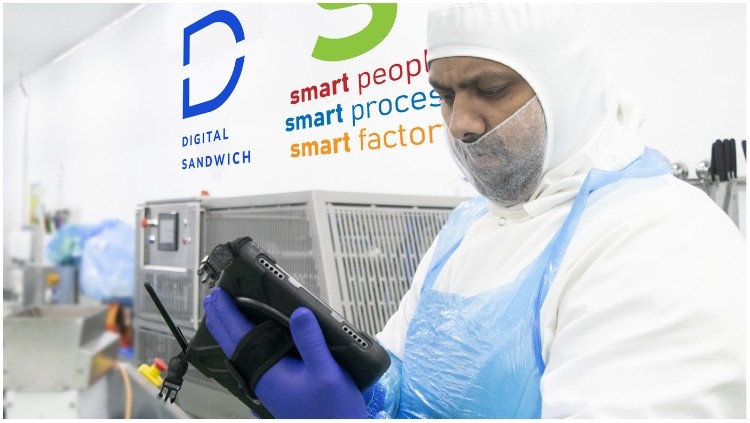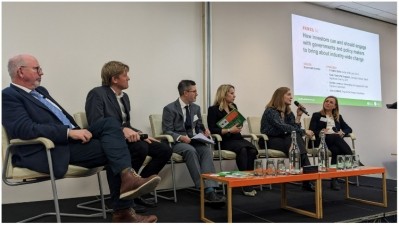It’s time for radical change

The food manufacturing sector is being battered on multiple fronts and these assaults will continue into 2023 and beyond.
In the past few years, UK food manufacturing has been systemically challenged by leaving the European Union and losing access to rich labour pools of skills and talents, while high levels of valuable resources have been spent in preparation for a worst-outcome, no-deal EU exit.
Concurrently the world was struck with a pandemic, disrupting and displacing supply chains as well as displacing labour and skills to other sectors or leaving the UK workforce entirely.
Then war broke out in Europe further displacing supply chains, especially for some food commodities, and adding a newly debilitating factor in higher energy costs.
As a result of these pressures, we find ourselves fighting to control rampant inflation, especially in key proteins and competition for the depleted labour pool, while the buying public is suffering from an unprecedented rise in the cost of living.
Over and above the topical challenges we face, the increasingly severe impacts of climate change are asserting themselves: ruinous floods; wildfires; storms battering our primary production centres and supply chains; and the ever-present threat of more and more severe temperature peaks. Older food factories with refrigeration were typically designed for temperatures around 28˚C in the UK, newer factories work to 32˚C and now serious consideration is being given on how to manage 40˚C for prolonged spells.
Climate change is a transformative widespread permanent systematic change with far-reaching disruptive impacts on food production, food safety, food quality, food security, food poverty and food nutrition – to the extent that MVD (minimum viable diets) may soon become a common point of discussion.
It's likely that on every risk register held by food manufacturers who survived the pandemic, some of these risks manifest in one guise or another.
But food manufacturers cannot just evolve - there is too little time. Instead, we must radically and quickly adapt, reinvest, and transform our business models if we are to continue to deliver safe, nutritious, affordable sustenance. To have any chance of success, this inescapably demands much faster, more detailed and more intelligent collaboration up and down our supply chains.
Technology, more explicitly fused digital technologies, offer hope
Fundamentally, FDT (fused digital technologies) comprise things like IoT (sensors, meters, smart switches etc), 4G/5G, Artificial Intelligence, APIs (allowing applications speak directly to each other), robotics, advanced imaging, Cloud computing and DLT (distributed ledger technology or ‘blockchain’) and others that are inter-connected. The aim of FDT is to develop and orchestrate these technologies towards a singular system or platform.
Deploying this technology will allow food manufacturers to automate, manage by exception and significantly enhance efficiencies both on the factory floor and across office functions.
AI such as Catseye or Singular Intelligence will help us to sense and optimise demand (and waste) across the supply chain, diminishing the Bullwhip Effect, which is the creation of excess inventory as contingency ordering at each stage of a supply chain inflates the level of stock produced and held. Eliminating this excess capacity will reduce inventory requirements and their associated costs and wastage.
More importantly it will provide the food manufacturer with fine-grained, precise, immutable (if on the DLT) and trusted data – the all-important ‘one version of the truth’ essential to making informed decisions.
Unit Level Traceability
One key new capability is unit-level, rather than batch-level, traceability. This was demonstrated in December 2022 when the world's first digital sandwich was made by the Digital Sandwich consortium.
Unit-level traceability is a game-changer in that it allows target recalls/withdrawals and investigation of quality and food safety/authenticity conformity. It further provides product information and a ‘true’ unit-level CO2e footprint for the individual product which can be passed on to the customer.
Every stage of the sourcing, production and delivery process is considered. Real unit-level recording and reporting means that, for the first time ever, a jar of jam delivered from Southampton to London can have and communicate its own CO2e footprint.
Balancing competition with collaboration.
However, technology is no silver bullet – the business cultural model must also change. This not only relates to the employees within our Digital Sandwich testbed food factory, but also how organisations collaborate with their supply chain and stakeholders – chiefly by permitting access to data to help the supply chain to be more efficient and meet the needs of the customer and end-user.
This human element is the key distinction between the 4th and 5th Industrial Revolutions – it is the collaboration of human and machine, working in harmony to deliver safe, nutritious, affordable food of the highest possible quality.
The next step
Digital fusion of manual and mechanical operation is at the heart of a new project called S3 (Smart People + Smart Process = Smart Factory) which kicks off in January 2023.
The S3 consortium is deploying an array of digital technology in our food factory to measure and make all CO2e visible as well as identifying and analysing sources of waste in energy, time, materials, machinery and labour and then, through gamification, incentivising staff across the whole enterprise to reduce our CO2e footprint by rewarding and recognising individuals for their efforts.
The future is industry-wide
On a final point, these technologies are as accessible for food manufactures as they are for any other manufacturing sector in the UK.
Our industry has a reputation for being low tech, uncreative and insular – which holds some truth, but decreasingly so. Commercial pressure, the technical challenges of providing safe food and an increasingly sustainability-aware customer base means we have had to become a pragmatic breed who recognise the need to be agile, resilient and resourceful.
That means we have all the attributes to ensure that the world’s 5th Industrial Revolution starts in UK food manufacturing. That’s the challenge - and we’re throwing it open to everyone who’d like to join us.
About the author
Tom Æ Hollands is the Innovation and Technical Director at Raynor Foods, he is an accomplished Food Scientist who has worked in both government (Food Standards Agency) and the private sector. Tom is a true innovator at heart and has won many national and international accolades, in 2021 he was cited in The Manufacturers Top100 as an Exemplar Innovation Leader for UK manufacturing.
Tom’s innovations are focused on sustainability and meta food systems, their emerging technologies and the complex links that join them.

















